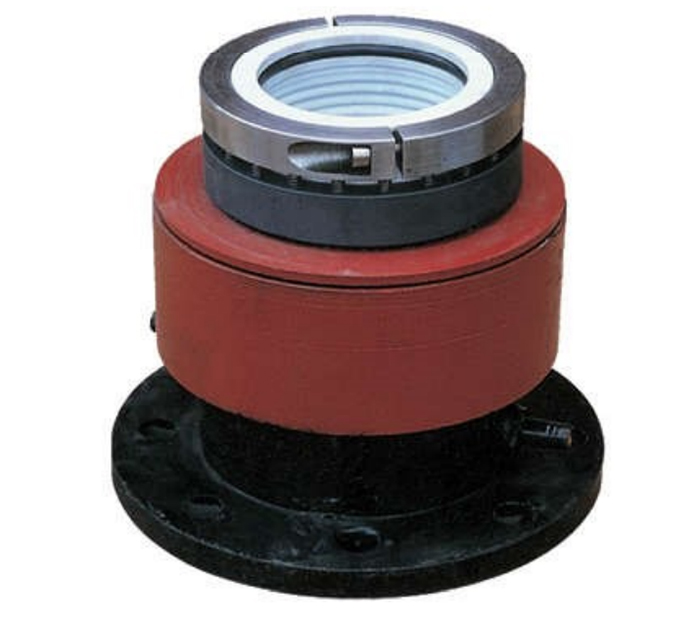1. Glass lined single mechanical seal instruction:
The 212 single-end mechanical seal is a commonly used part of the reactor. The mechanical seal is located at the middle nozzle of the upper part of the reactor and is connected to the agitator and reducer. It is suitable for mechanical sealing of glass-lined stirring vessels with nominal pressure less than or equal to 0.4mpa and working temperature greater than -20-200°c. The outer diameter of the stirring shaft is 40-140mm, and the speed of the rotation axis is less than 2m/s. Adopt single-end small spring PTFE bellows. The type 212 mechanical seal for the kettle is a single end face. More springs. Non-balanced structure, specially designed for the sealing of the stirring shaft of the corrosion-resistant glass-lined reactor, using alumina ceramic static ring and corrugated tube filled tetrafluoroethylene movable ring. To prevent dry friction, the seal is immersed in an open liquid tank. A cooling water jacket with tetrafluoroethylene gloves can be provided at the connection part of the lower part and the kettle body to reduce the heat conducted by the kettle body to the seal and the partial mixing of the stirring shaft.
2. Use range:
Working Pressure:0-0.2MPa
Design pressure 0.4MPa
Temperature: In the sealed cavity ≤80℃, inside the vessel -20~300℃
Speed: ≤300rpm
Working conditions: corrosive gas without suspended particles (except HF)
3. Structural features:
Installation dimensions conform to HG20571-91 "Mechanical Seal for Glass-lined Mixing Vessel" and HG/2095-91 "Glass-lined Equipment Transmission Device"
This product is a single-end small spring outflow type PTFE bellows structure. Used in glass-lined and various corrosion-resistant stirring shaft seals.
The single-end mechanical seal is a mechanical seal composed of a pair of sealed end faces, which has the characteristics of simple sealing structure, easy manufacture and installation. It is generally used in situations where the medium itself has good lubricity and allows a small amount of leakage. It is the most commonly used type of mechanical seal. It is not easy to use when the medium is toxic, flammable, explosive and has strict requirements on leakage.
This kind of mechanical seal has only one end face, the so-called "single end face". The single-end mechanical seal can be used alone in a submersible electric pump, or two sets of single-end mechanical seals can be installed in series according to the need. When two sets of single-end mechanical seals are used in series, the function of each set of mechanical seals is basically similar to that of each double-end mechanical seal, but the overall sealing pressure capacity of the mechanical seal is improved. When the head of the water pump is higher, the pressure bearing capacity of the mechanical seal is improved and the leakage is reduced.
When a set of single-end mechanical seal is used alone in an oil-filled motor, it is necessary to prevent foreign matter, sand and water from entering the machine, but also to prevent the oil from leaking out of the machine. The sealing requirements are high, and the sealing ring material requirements are better. It is made of tungsten carbide or silicon carbide material; if it is installed on the shaft extension end of a water-filled motor, it is generally only required to play a role in sand control. The sealing ring can be made of alumina ceramic, silicon nitride or other hard materials, and the cost is relatively low.
| Glass lined single mechanical seal: |
|
|
|
|
|
|
|
|
|
|
|
|
|
|
|
|
|
|
|
| Type | 212-40 | 212-50 | 212-65 | 212-80 | 212-95 | 212-110 | 212-130 | 212-140 |
|
| Split flange DN | 65 | 80 | 100 | 125 | 150 | 200 | 200 | 250 |
|
|
|
|
|
|
|
|
|
|
|


















